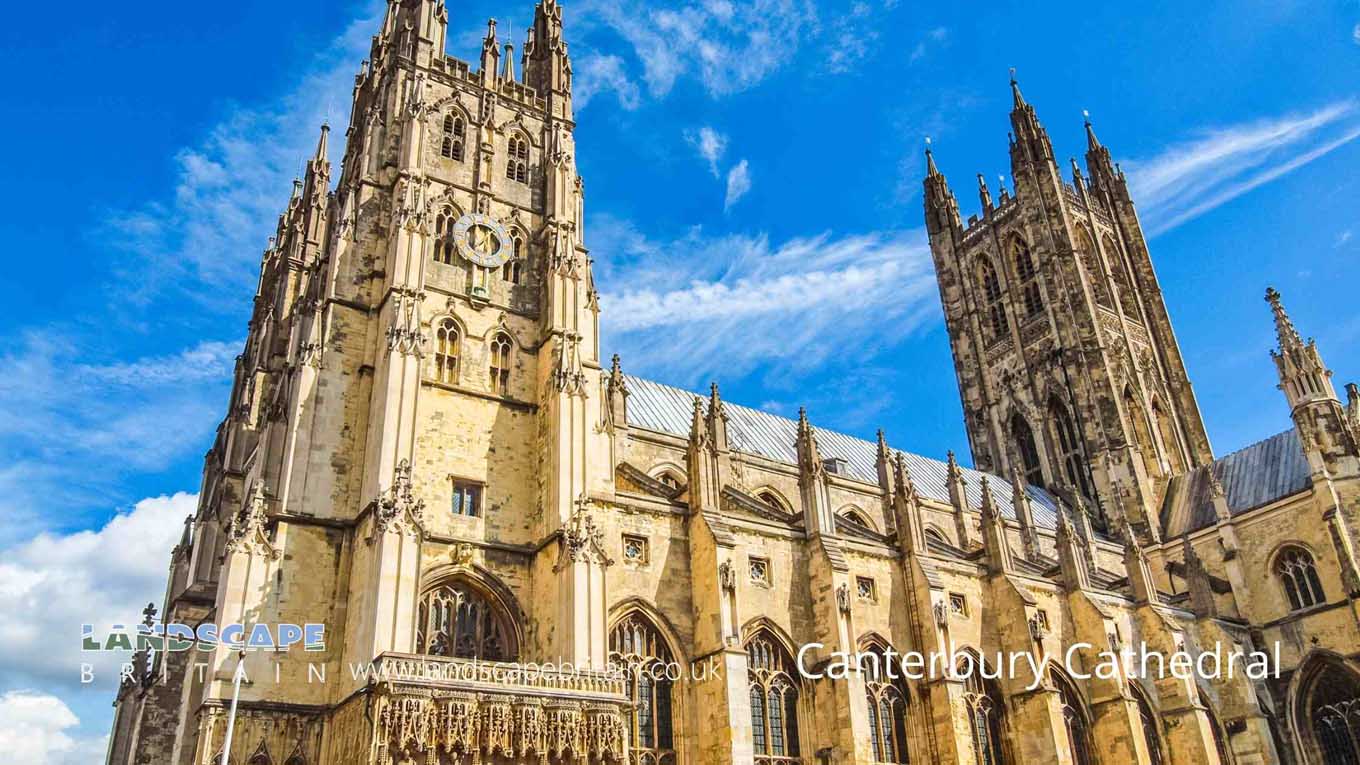
Canterbury Cathedral
Canterbury Cathedral
Historic Canterbury Cathedral was once a site visited by pilgrims, and is now visited by anyone wanting to see amazing architecture and soak up the history.
The history of the cathedral is long and storied, filled with stories of over 1000 years of growth, destruction, change and development.
Since that time, it has undergone numerous changes which have not only improved its looks but also changed the way it functions. The history can be split into different periods starting from around 930 AD when work to build a new cathedral began after the original wooden one burnt down. This cathedral can still be seen today though much of it is now gone. At this time, canterbury cathedral was one of the biggest churches in europe.
The next period of canterbury cathedral’s history can be said to be right after the original building burned down, or around 1050 AD. During this time more than half of the current structure was built. Huge changes were made during this construction including adding buttresses and huge stained glass windows which can still be seen today.
Created: 30 October 2021 Edited: 29 November 2023
Canterbury Cathedral Information
Canterbury Cathedral Address
Cathedral House, 11 The Precincts, Canterbury CT1 2EH, UK
CT1 2EH
Website: http://www.canterbury-cathedral.org/
Get directionsLocal History around Canterbury Cathedral
There are some historic monuments around including:
Horton ChapelBowl barrow situated in the southern part of Iffin Wood, 100m east of New House LaneSite of St Radigund's HospiceDane John Mound and Roman and medieval remains in Dane John GardenCanterbury city wallsSt Augustine's AbbeyGreyfriars, CanterburyConduit House, NE of Victoria married quarters, Military RoadSite of church and graveyard of St Mary de CastroCity wall (site) and ditch on Rheims WayCanterbury CastleBowl barrow 400m north-east of Buckholt Farm in Mounts WoodDovecote at Burnt House FarmSt Augustine's monastic conduit house, King's ParkBlackfriarsHospital of St John the BaptistBigberry campMedieval wall of Black Prince's ChantrySt George's Church towerBowl barrow situated in the northern part of Iffin Wood, 120m east of New House LaneArchbishop's Palace, BekesbourneBowl Barrow 350M E.S.E. of Capel farm in Mounts WoodAnglo-Saxon cemetery on Hanging Hill, Bridge, immediately south west of Watling StreetAbbot's Mill and sluice at Blackfriars StreetPart of the Tyler Hill medieval pottery and tile industryCity wall and bastion in Westgate GardensThe GuildhallRoman cist burials in Gorsley WoodA pair of bowl barrows in Clowes WoodRoman site, Butchery LaneDispersed medieval settlement remains and a Roman building immediately south west of St Cosmus and St Damian's ChurchChristchurch Priory and Archbishop's PalaceTower of St Magdalene's ChurchVacant land within Roman walls in Adelaide PlaceA deserted medieval manorial settlement and associated earthworks in Iffin WoodRoman remains on Marlowe car park.




